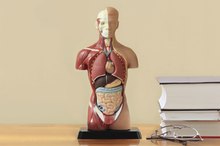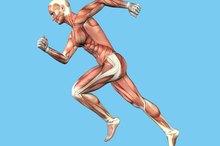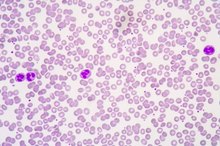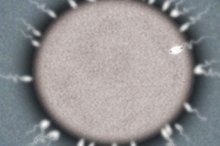How Cell Organelles Work Together
Cells are the simplest units of life. In some organisms, cells function as the complete living creature--bacteria, for instance, consist of only a single cell. In other organisms, many cells working together comprise the organism. Regardless of whether a living being is made up of one cell or millions, cells need to be able to operate as coherent units. To this end, they're made up of many different organelles, which function much like body organs.
Features
Cells don't truly have organs; by definition, an organ is made up of tissue, which is made up of cells. Still, there are similarities between organs and organelles. Both perform specific functions that promote life, and both represent subdivisions of the whole. In their book "Biochemistry," Drs. Mary Campbell and Shawn Farrell note that the most complex of cells with the greatest variety of organelles belong to prokaryotic organisms, or living creatures other than bacteria 1.
- Cells don't truly have organs; by definition, an organ is made up of tissue, which is made up of cells.
- Mary Campbell and Shawn Farrell note that the most complex of cells with the greatest variety of organelles belong to prokaryotic organisms, or living creatures other than bacteria 1.
Protein Synthesis
3 Specific Uses of Enzymes in the Human Body
Learn More
Almost all cells make protein, whether it's for their own use or to export as a product. A variety of organelles coordinate their activities to this end, explain Drs. Campbell and Farrell 1. The nucleus of the cell is an organelle that contains DNA, or genetic information. It must produce a working copy of that information, called RNA, which it ships out into the rest of the cell. Then organelles called ribosomes, which are often located attached to organelles called the rough endoplasmic reticulum, make protein by reading the RNA.
- Almost all cells make protein, whether it's for their own use or to export as a product.
- The nucleus of the cell is an organelle that contains DNA, or genetic information.
Reproduction
Most cells have to reproduce themselves. In order to do so, many organelles have to work together. This process, explains Dr. Lauralee Sherwood in her book, "Human Physiology," is called mitosis 2. The nucleus copies the genetic information, forming an exact duplicate. Then, cytoskeletal elements, which form some of the structure of the cell and act like a combination of skeleton and muscle, pull the two copies of the genes away from one another. Finally, the cell's membrane splits into two, dividing the cell into equal and complete halves.
- Most cells have to reproduce themselves.
- Finally, the cell's membrane splits into two, dividing the cell into equal and complete halves.
Importation and Exportation
3 Major Cell Types
Learn More
Cells need to be able to bring in nutrients and export products. There are additional organelles that coordinate their activities to achieve these goals. The cell membrane folds inward, forming an invagination, to draw in food or liquid particles. Resulting small bubbles of food inside the cell fuse with digestive organelles called lysosomes. An organelle called the Golgi complex, explains Dr. Sherwood, exports cellular products, working in tandem with the rough endoplasmic reticulum.
- Cells need to be able to bring in nutrients and export products.
- An organelle called the Golgi complex, explains Dr. Sherwood, exports cellular products, working in tandem with the rough endoplasmic reticulum.
Considerations
In his book "Anatomy and Physiology," Dr. Gary Thibodeau notes that while more complicated cells consist of a greater variety of organelles than simpler cells like bacteria, bacterial cells also have a small number of organelles 3. They possess nuclei like larger cells and also have ribosomes, which they use for making protein. Many of the functions restricted to organelles in larger cells are simply fulfilled in the cytoplasm, or internal water-based environment, of bacterial cells and are not associated with organelles.
Related Articles
References
- “Biochemistry”; Mary Campbell, Ph.D. and Shawn Farrell, Ph.D.; 2005
- “Human Physiology”; Lauralee Sherwood, Ph.D.; 2004
- “Anatomy and Physiology”; Gary Thibodeau, Ph.D.; 2007
Writer Bio
Kirstin Hendrickson is a writer, teacher, coach, athlete and author of the textbook "Chemistry In The World." She's been teaching and writing about health, wellness and nutrition for more than 10 years. She has a Bachelor of Science in zoology, a Bachelor of Science in psychology, a Master of Science in chemistry and a doctoral degree in bioorganic chemistry.









